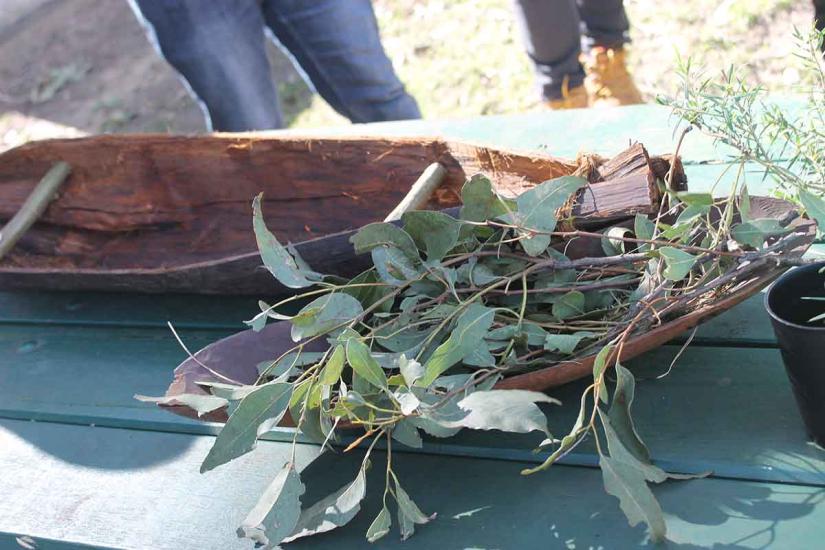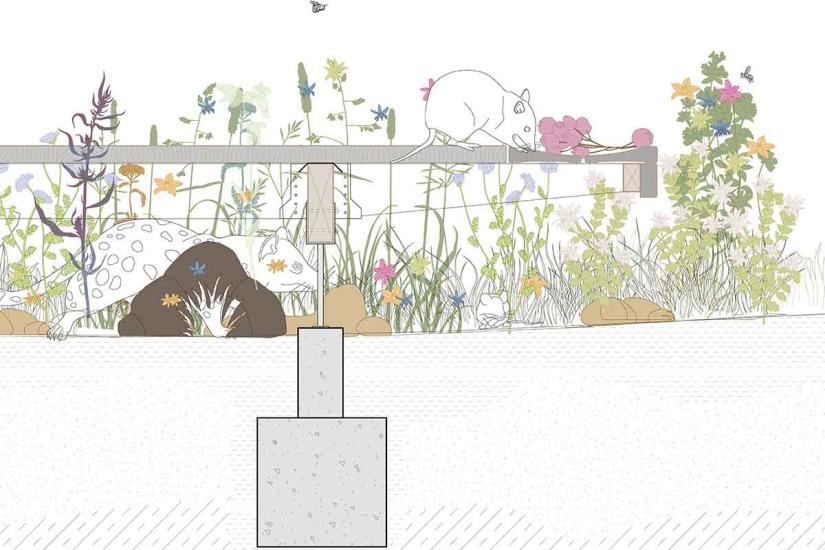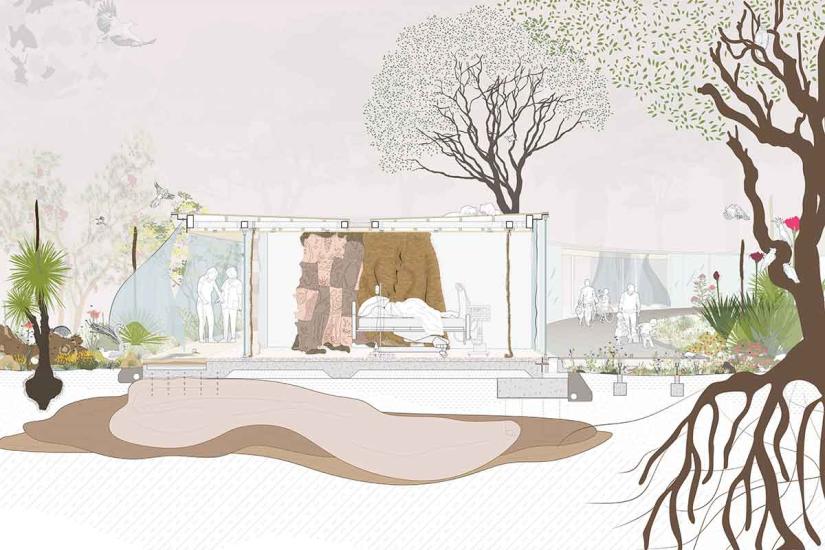Through her studies to attain a Master of Architecture, Rhiannon Brownbill discovered a passion for designing with Country to create equitable spaces that provide room to work, live and heal.
Rhiannon grew up on a nursery surrounded by native plants and animals, which at the time she said she didn’t particularly enjoy. However, she now realises it was a gift that would later inspire her career.
Growing up, her mum experienced a physical disability and her dad a mental disability. After completing the Bachelor of Design in Architecture at the University of Technology Sydney (UTS), Rhiannon began to see the importance of the built environment on a person’s wellbeing, especially in a clinical setting, and how her role in architecture could really make a difference in people’s lives.
Motivated by her parent's experience and a desire to help others, Rhiannon’s first job after completing her undergraduate studies was working in disability support within clients’ homes. She then moved on to working in an architecture firm, where she began to look for ways to create more inclusive designs.
Around this time, her dad sadly passed away after a long battle with mental illness.
“My dad, who had spent most of his life surrounded by plants, passed away in a stark hospital, where his connection to nature was stripped away. It felt very inhuman,” she said.
After seeing first-hand what her dad had gone through, Rhiannon wanted to ensure others didn’t experience the same. She enrolled in the Master of Architecture through the Faculty of Design, Architecture and Building at UTS with hopes she could use her qualification to voice her perspective and make an impact on the design of healthcare settings.
Opportunity came knocking
During her master’s program, Rhiannon enrolled in electives on Aboriginal Sydney, and the evolution of housing and design policy in New South Wales from colonisation to the present day. However, she was most inspired during the Wingara'ba'miya Design Studio, which was led by architecture academic Jo Paterson Kinniburgh and D’harawal eora Knowledge Keeper Shannon Foster.
“Through my studies, I was given the opportunity to explore architecture, healthcare and disability through the lens of Country,” she said.
“I could see immediately how working with Aboriginal and Torres Strait Islander peoples and their local knowledges of Country could help to transform and decolonise our medical spaces and thinking.”

Walking Country with Knowledge Keepers and preparing a smoking ceremony for a new Health Infrastructure NSW project in Sydney. (Photo: Rhiannon Brownbill)
As designing with Country was such a new discipline in architecture at the time, Rhiannon quickly became the main point of contact at her firm to field enquiries on this topic.
“There were a lot of questions being asked about designing with Country, and I was the only person in the office with the knowledge to be able to help,” she said.
“I was put into a leadership role to support others in their understanding and to help them learn more about the concept.”
Rhiannon graduated from her master’s in 2021 and through her connections with UTS she was offered a role halfway through her final year at the spatial design practice Bangawarra.
Designing with Country
Rhiannon works as a Connecting with Country Spatial Design Consultant at Bangawarra – a design practice that challenges colonial spatial methods and applies Aboriginal knowledge and culture to create spaces for all people and all aspects of nature and the environment.
Rhiannon is also sharing her knowledge with future generations by returning to her alma mater as a tutor helping students in the Bachelor of Design in Architecture program at UTS.
In her role at Bangawarra, she collaborates with architects, landscape architects, engineers, ecologists and wider project teams to create spaces that are equitable, sustainable and facilitate biodiversity. Rhiannon and her team at Bangawarra have contributed to the design of everything from boardwalks through to schools, hospitals and much larger urban plans.
“We create spaces for everyone – and when we say everyone, we also mean the local plants, animals, earth and waters,” she said.
Rhiannon said another big part of her role is to help with project narratives.
“There is no such thing as a blank site. Before the infrastructure is in place, it's already an important site, and we need to work with its pre-existing knowledges and natural environment and then design with this in mind,” she said.

Elevated boardwalks provide space for people and the environment to co-exist. (Image: Rhiannon Brownbill)
As a non-Indigenous person, Rhiannon said the master’s program and her work experience have helped her to learn – and continue to learn – about Aboriginal culture, as well as how to apply critical thinking.
“Each day I’m challenging my preconceptions to learn how to better operate within an Indigenous space,” she said.
The master’s program has also given Rhiannon the skills to communicate design concepts to stakeholders, which she does verbally, visually and through writing.
“Because a lot of the designs we’re creating are new, we don't have pictures to draw upon. This means a lot of my job is using digital tools to draw our ideas and communicate them in a way that is practical, but also helps to get buy-in from people at an emotional level,” she said.
Completing her studies
During her master’s program, Rhiannon was able to take her time and choose her own path, which helped to keep her motivated and made the completion of her studies far more achievable.
Another factor that really helped was working in an environment that valued work/life balance, where she could clock-off on time and structure her work around class times. It's something she now encourages the students she teaches to do as well.
Despite graduating in 2021, the work she produced during her studies is still making an impact. This year, her UTS master’s thesis project Burudi Gurad, Burudi Ora (Healthy Country, Healthy People) was awarded the 2023 Bluescope Glenn Murcutt Student Prize – a biennial architecture award that recognises excellence in response to place, technology and Australian culture.

Rhiannon's graduate thesis proposal explored how architecture that is designed with Country and local First Nations peoples (in this case the D'harawal Elders and Knowledge Holder Circle of Sydney) can support healing Country and people. (Image: Rhiannon Brownbill)
For Rhiannon, completing her Master of Architecture has led to a career she is much more aligned with.
“Before my master’s degree, I considered myself a regular architect,” she said.
“Now, I am in an area I really want to work in. I found a better system for the way we design spaces that protects our natural environment and allows for an even greater emphasis on inclusive design.”
Are you thinking about further study? Learn more about the postgraduate experience at UTS and explore our course options. Enquire about postgraduate study at UTS here.


